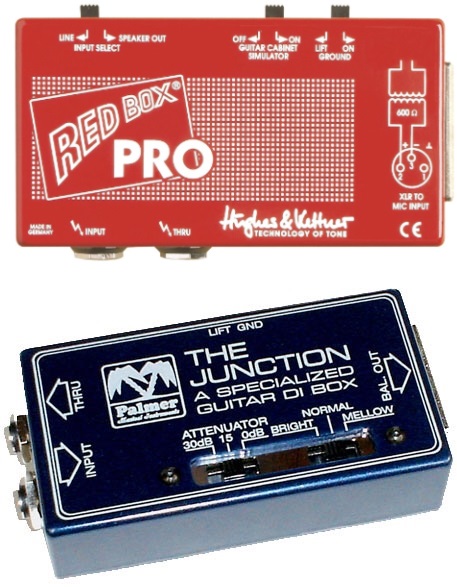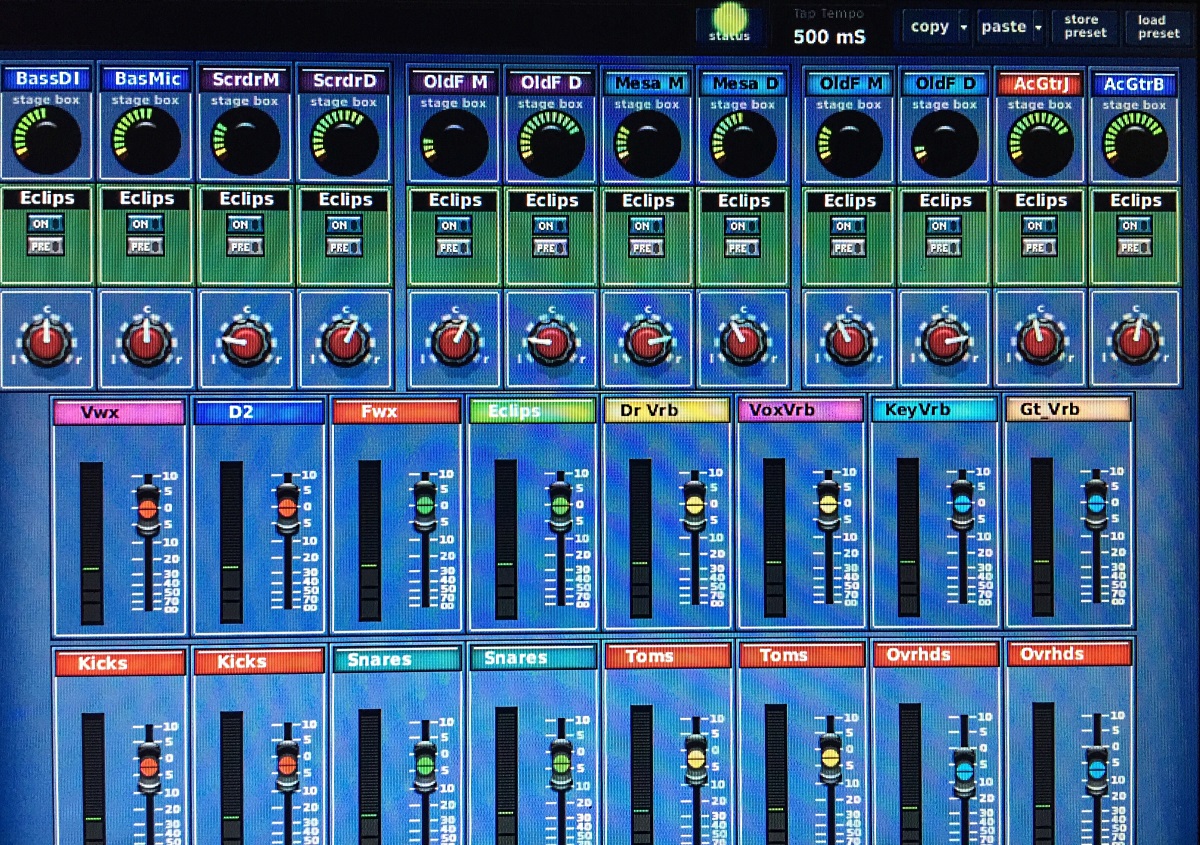The guitar players in Umphrey’s McGee (the band that I work with) are masters of their craft. Not only are they great players, they can create complex and gorgeous guitar tones that require only reproduction to fit into my mix, sans correction or modification.
I want to present those tones accurately, with some degree of isolation from the other onstage noise makers. Further, I want to place them carefully in the mix so their natural dynamic stays mainly in the pocket, requiring only soft fader moves.
Where It Starts
First, here’s how I capture their signals. Jake (Cinninger) plays through two amps. The “clean” amp is a Schroeder DB9 tube head and matching cabinet with a 12-inch Weber driver and a 12-inch Celestion driver, while the “dirty” amp is an Oldfield JC-110 tube head with matching cabinet containing two 12-inch Electro-Voice drivers.

Each cabinet is miked with an Earthworks SR25 cardioid condenser microphone, and each amplifier’s parallel speaker out is routed to a Hughes & Kettner RedBox Pro, a great transformer-based direct box used as a post amplifier DI with passive filters that emulate the response of a closed back speaker cabinet.
Meanwhile, Brendan (Bayliss) plays his clean tone through a Mesa Boogie Lonestar tube head with a Hard Trucker JG1 cabinet loaded with two 12-inch B&C 12HPL64 drivers. His dirty tone is through an Oldfield Marquis 80 amp loaded with two 12-inch Celestion drivers.
These cabinets are also miked with Earthworks SR25s, but with two Palmer PDI09 DIs on the parallel speaker outputs because they complement his tone better than the RedBox Pros.
Those eight signals continue into the Midas ProX digital console, where I set the preamp level so each signal reaches about +3 dBu to +6 dBu when loudest. I like using as many bits of the A/D converter as I can without clipping.
Once captured, I want to combine the mic and DI. I delay the DI signals to compensate for the time necessary for the sound wave from the speaker to reach the mic, which measures out to about 0.33 ms (milliseconds). This allows the signals to be combined without the comb filtering inherent with different arrival times.
Beautiful Symmetry
For the Schroeder DB9, I pan the mic to 9:30 and the DI to 1:00 (as referenced to a clock face). For the Oldfield JC-110, I pan the mic to 1:00 and the DI to 9:30 (opposite the Schroeder).
Those settings cause the combined signal to sit around 11:00-ish in the stereo field. But since the mic and DI are slightly different, the image floats around a bit, adding depth of field without altering the signal or mangling it with plugins.
Brendan’s signals are panned to 11:00 and 2:30, resulting in an image around 1:00-ish. With Jake’s guitars floating around 11 and Brendan’s around 1, they maintain beautiful symmetry, slightly spread with depth and texture.
Because I like the signals coming from the Earthworks SR25s and the post-amp DIs, I use no parametric EQ or inline compression. The high-pass filters are set between 80 Hz and 100 Hz, depending on the amp. Parallel bus compression is applied for each amp, with four stereo subgroup buses for that use, one for each amp.

The eight channels of guitars are routed to the main Stereo mix bus and to its own compression bus, which is also routed to the main Stereo mix bus. As with my drum channels, the dynamic uncompressed signal is combined with the heavily compressed subgroup signal.
The main benefit of this approach is that it adds RMS energy to the guitar signals without the dulling effect that can come from inline compression. The sound is beefier with – rather than without – the parallel compression, with all the attacking transients intact.
Finally, I like to keep the eight guitar channel faders set at -6 dB and to control their level with the assigned DCA fader for each player. The resulting tones are amazing, full of detail and complexity – captured, amplified and ready to be mixed with the rest of the band.













